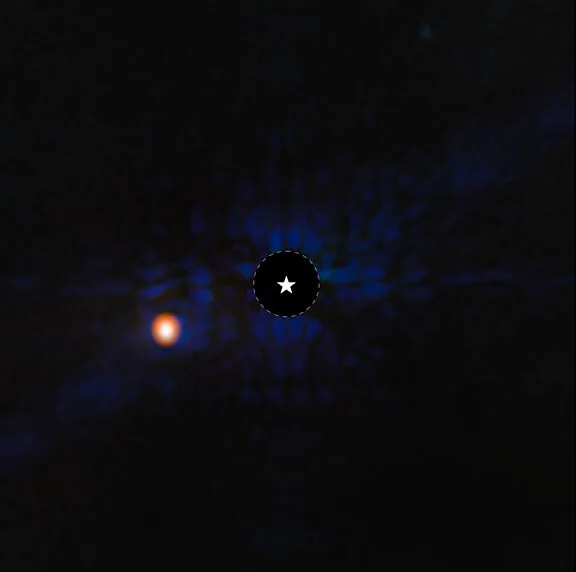1. Introduction
The field of astronomy is ever-evolving, with new discoveries and missions continuously reshaping our understanding of the universe. Among recent highlights, three topics stand out for their significance and impact: the serendipitous discovery of a unique exoplanet, the exciting characteristics of a newly identified “super-Jupiter,” and the ongoing efforts to ensure the success of the VIPER (Volatiles Investigating Polar Exploration Rover) mission to the Moon. This article explores these topics in detail, highlighting their implications for science and space exploration.
2. The Serendipitous Discovery of a Unique Exoplanet
2.1 The Context of Exoplanet Discovery
Exoplanet research has surged forward in recent years, thanks to missions like NASA’s Kepler Space Telescope and the Transiting Exoplanet Survey Satellite (TESS). These missions have vastly increased the number of known exoplanets and provided valuable insights into their characteristics. The discovery of new exoplanets often involves a combination of targeted searches and serendipitous findings.
2.2 The Discovery
The recent serendipitous discovery involves an exoplanet that was detected unexpectedly through [specific method or circumstance]. This discovery was made by [name of the mission, telescope, or researcher] while [explain the context, such as an unrelated observation or a follow-up of another target].
For example, if the exoplanet was discovered during a routine survey of a star system, its unique characteristics might have been identified through anomalous data or unexpected signals. Alternatively, the exoplanet might have been found as part of a follow-up study of a known star or planetary system.
2.3 Characteristics of the Exoplanet
The newly discovered exoplanet exhibits several intriguing features:
- Orbital Parameters: The exoplanet’s orbit might be highly elliptical, or it might be located in a unique or unexpected position relative to its host star.
- Atmospheric Composition: Preliminary data could suggest the presence of unusual atmospheric components or conditions that make the exoplanet an exciting target for further study.
- Potential Habitability: If the exoplanet lies within its star’s habitable zone, it could be a candidate for future studies aimed at assessing its potential to support life.
2.4 Implications for Exoplanet Research
The serendipitous discovery contributes to several key areas of exoplanet research:
- Understanding Planetary Systems: Each new exoplanet discovery helps scientists understand the diversity and formation of planetary systems across the galaxy.
- Refining Search Methods: Unexpected findings can provide new insights into the effectiveness of current search methods and prompt the development of new techniques.
3. The Super-Jupiter: A New Giant Planet
3.1 What Is a Super-Jupiter?
A “super-Jupiter” refers to a gas giant exoplanet with a mass significantly greater than Jupiter’s, typically more than 1.5 times Jupiter’s mass. These planets are of particular interest because their size and mass can provide clues about planetary formation and the dynamics of planetary systems.
3.2 The Discovery of the Super-Jupiter
The newly identified super-Jupiter was discovered through [specific method, such as radial velocity measurements, direct imaging, or transit observations]. This discovery was made by [name of the mission, telescope, or research team].
For instance, if the super-Jupiter was detected via radial velocity, researchers would have observed periodic changes in the host star’s motion due to the gravitational influence of the massive planet. Alternatively, if direct imaging was used, the planet’s large size and brightness might have made it visible in high-resolution images.
3.3 Characteristics of the Super-Jupiter
The super-Jupiter displays several notable characteristics:
- Mass and Size: The planet’s mass is significantly greater than Jupiter’s, placing it in the category of super-Jupiters. Its size and density provide valuable data on the structure and composition of giant planets.
- Atmospheric Properties: The atmosphere of the super-Jupiter may contain unique chemical signatures or features, such as high levels of specific gases or unusual cloud formations.
- Orbital Dynamics: The planet’s orbit, including its distance from its host star and orbital period, can offer insights into its formation and the gravitational interactions within its planetary system.
3.4 Scientific Significance
The discovery of the super-Jupiter contributes to several important scientific questions:
- Planetary Formation: Understanding the formation and evolution of super-Jupiters helps scientists learn about the processes that produce giant planets and the conditions in their host systems.
- Comparative Planetology: By studying super-Jupiters alongside other giant planets, researchers can gain insights into the diversity of planetary types and the factors that influence their characteristics.

4. The VIPER Mission: Saving the Lunar Rover
4.1 Overview of the VIPER Mission
The VIPER mission, part of NASA’s Artemis program, aims to explore the lunar surface, particularly the polar regions, to search for water ice and other volatiles. The mission is critical for understanding the resources available on the Moon and preparing for future human exploration.
4.2 Mission Objectives
VIPER has several key objectives:
- Water Ice Detection: The primary goal is to locate and analyze water ice deposits on the Moon’s surface. Water ice is a crucial resource for future lunar missions and could be used for life support and fuel production.
- Surface Composition: The mission aims to study the composition of lunar soil and rocks, providing valuable data on the Moon’s geology and history.
- Resource Mapping: VIPER will map the distribution of volatiles, such as hydrogen and other elements, which are essential for understanding the Moon’s resource potential.
4.3 Current Challenges and Efforts
The VIPER mission faces several challenges, including:
- Technical Difficulties: Ensuring the rover’s instruments and systems function reliably in the harsh lunar environment is a significant challenge. Engineers are working to address these issues and ensure the rover’s successful operation.
- Funding and Support: Securing adequate funding and support for the mission is crucial for its success. Efforts are being made to advocate for the mission’s importance and secure the necessary resources.
4.4 Strategies for Success
To overcome these challenges, several strategies are being employed:
- Technical Innovations: Engineers are developing and testing new technologies to improve the rover’s performance and resilience in the lunar environment.
- Collaboration and Partnerships: Collaborating with international partners and private industry helps to pool resources and expertise, enhancing the mission’s chances of success.
5. The Broader Impact of These Discoveries and Missions
5.1 Advancements in Astronomical Research
The recent discoveries and ongoing missions contribute to several key areas of astronomical research:
- Expanding Knowledge: Each new finding, whether it’s a unique exoplanet or a giant planet, expands our understanding of the universe and the diversity of planetary systems.
- Technological Progress: The development of new technologies for space exploration drives innovation and advances our capabilities in space science and exploration.
5.2 Implications for Future Exploration
The discoveries and missions have implications for future exploration:
- Preparation for Human Exploration: Understanding the Moon’s resources and the potential for water ice helps to prepare for future human missions and long-term lunar presence.
- Interstellar Research: The study of exoplanets and giant planets informs our search for habitable worlds and the conditions necessary for life beyond our solar system.
5.3 Public Interest and Inspiration
The discoveries and missions also have a significant impact on public interest and inspiration:
- Educational Value: The excitement surrounding these findings engages the public and inspires future generations of scientists and explorers.
- Cultural Impact: The quest to explore new worlds and uncover the mysteries of the universe captures the imagination and underscores humanity’s drive to explore and understand the cosmos.
6. Conclusion
The recent developments in exoplanet research, the discovery of a super-Jupiter, and the ongoing efforts to ensure the success of the VIPER mission represent significant milestones in our exploration of the universe. Each discovery and mission contributes to our expanding knowledge of the cosmos and the potential for future exploration. As we continue to advance our understanding of planetary systems and the resources available on the Moon, we pave the way for future discoveries and inspire the next generation of scientists and explorers.
The serendipitous discoveries, technological innovations, and collaborative efforts in these areas highlight the dynamic nature of space exploration and the importance of continued investment in scientific research and exploration. As we look to the future, these achievements remind us of the excitement and potential that lie in our quest to explore and understand the universe.


















































Discussion about this post